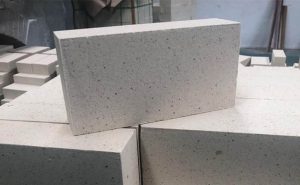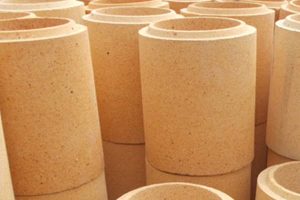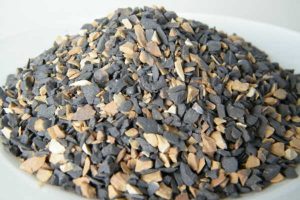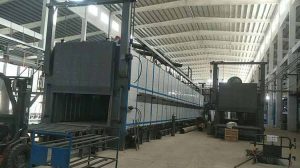내화 벽돌은 고온 환경에서 사용되는 특수 세라믹 재료의 일종입니다..
판매용 내화 벽돌은 고온을 견뎌야 하며 다양한 출처의 화학적 공격에 저항해야 합니다.. 가장 일반적인 공격 유형 중 하나는 알칼리 화합물에서 나옵니다..
소개
내화성 벽돌은 고온 산업 공정의 중요한 구성 요소입니다., 철강 생산과 같은, 유리 제조, 시멘트 생산.
그들은 고온을 견딜 수 있도록 설계되었습니다, 기계식 마모, 그리고 화학적 부식.
화학적 부식은 다양한 공급원에서 나올 수 있습니다, 슬래그와 같은, 녹은 금속, 그리고 가스. 화학 부식의 가장 일반적인 공급원 중 하나는 알칼리 화합물의 존재입니다..
알칼리 화합물은 불응 성 물질과 반응하여 내화성 안감의 부식 및 고장으로 이어질 수 있습니다..
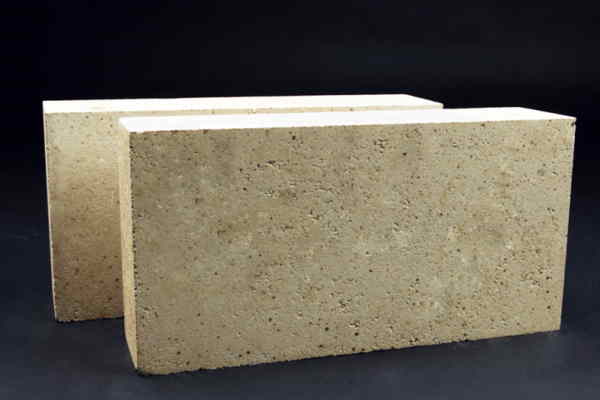
내화성 벽돌은 무엇입니까??
내화 벽돌은 고온과 가혹한 환경을 견딜 수있는 세라믹 물질의 한 유형입니다..
그들은 다양한 원료로 만들어졌습니다, 알루미나와 같은, 규토, 마그네시아, 그리고 지르코니아. 내화 벽돌은 광범위한 응용 분야에서 사용됩니다., 용광로와 같은, 가마, 보일러, 및 소각로.
화학 성분에 따라 다른 범주로 분류 할 수 있습니다., 열 전도성, 및 기계적 특성.
내화성 벽돌의 알칼리 저항
알칼리 공격에 대한 내화 벽돌의 저항은 화학 조성 및 미세 구조에 따라 다릅니다..
알칼리 저항 알칼리 화합물의 부식 효과를 견딜 수있는 내화성 물질의 능력으로 정의됩니다..
알칼리 저항은 알칼리가 풍부한 환경에 노출되는 응용 분야에 사용되는 내화 재료의 중요한 특성입니다., 시멘트 가마 및 폐기물 소각로와 같은.
알칼리 저항성이 좋은 내화 벽돌의 유형
알칼리 저항성이 좋은 몇 가지 유형의 내화 벽돌이 있습니다.. 가장 일반적인 유형은입니다:
마그네시아 벽돌
마그네시아 벽돌은 마그네시아로 만들어집니다, 산화 마그네슘이 풍부한 천연 미네랄 (MgO).
마그네시아 내화물 벽돌 높은 함량의 MGO로 인해 우수한 알칼리 저항력이 있습니다..
MGO는 알칼리 화합물과 반응하여 내화성 안감을 부식하지 않는 안정적인 화합물을 형성합니다..
마그네시아 벽돌은 알칼리가 풍부한 환경에 노출되는 응용 분야에서 사용됩니다., 시멘트 가마 및 폐기물 소각로와 같은.
크롬-마그네시아 벽돌
크롬-마그네시아 벽돌은 마그네시아와 크롬 산화물의 혼합물로 만들어집니다. (CR2O3).
크롬-마그네 시아 벽돌은 MGO의 높은 함량과 알칼리 화합물을 갖는 안정적인 화합물의 형성으로 인해 우수한 알칼리 저항성을 가지고 있습니다..
크롬-마그네시아 벽돌은 고온과 알칼리가 풍부한 환경에 노출되는 응용 분야에 사용됩니다., 유리 용광로 및 소각로와 같은.
알루미나-실리카 벽돌
알루미나-실리카 벽돌은 알루미나와 실리카의 혼합물로 만들어졌습니다..
그들은 mullite의 안정적인 층의 형성으로 인해 좋은 알칼리 저항성을 가지고 있습니다. (Al6SI2O13) 고온에서.
뮬 라이트.
알루미나-실리카 벽돌 고온과 중간 정도의 알칼리 환경에 노출되는 응용 분야에서 사용됩니다., 알루미늄 제련소 및 유리 용광로와 같은.
지르콘 벽돌
지르콘 벽돌은 지르코니아로 만들어집니다 (ZrO2), 알칼리 화합물에 대한 저항성이 우수한 세라믹 물질.
지르콘 벽돌은 매우 높은 온도와 심한 알칼리가 풍부한 환경에 노출되는 응용 분야에서 사용됩니다., 제철소 및 유리 용융과 같은.
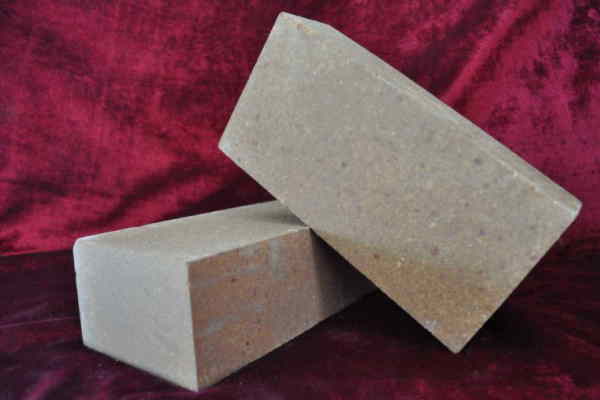
알칼리 저항성이 좋은 내화 벽돌의 특성
내화성 벽돌의 각 유형에는 고유 한 특성이있어 특정 응용 분야에 적합합니다.. 알칼리성이 좋은 내화 벽돌의 특성은 다음과 같습니다.:
마그네시아 벽돌
높은 굴절성
우수한 열충격 저항
우수한 알칼리 저항
낮은 열전도율
크롬-마그네시아 벽돌
높은 굴절성
우수한 열 충격 저항
좋은 알칼리 저항
좋은 내식성
알루미나-실리카 벽돌
좋은 굴절
우수한 열 충격 저항
좋은 알칼리 저항
낮은 열전도율
지르콘 벽돌
매우 높은 굴절성
우수한 열 충격 저항
우수한 알칼리 저항
낮은 열전도율
알칼리 저항성이 좋은 내화 벽돌의 적용
알칼리성이 좋은 내화 벽돌은 다양한 산업 응용 분야에서 사용됩니다., ~와 같은:
시멘트 가마
유리 용광로
제철소
폐기물 소각로
알루미늄 제련소
석유 화학 식물
결론
결론적으로, 알칼리성이 좋은 내화 벽돌은 고온 산업 공정에 필수적입니다..
다양한 유형의 내화성 벽돌, 마그네 시아 파이어 브릭과 같은, 크롬-마그네 시아 불 브릭, Alumina-Silica Firebricks, 지르콘 파이어 브릭, 특정 응용 프로그램에 적합한 고유 한 특성이 있습니다..
이러한 내화 벽돌의 특성과 응용은 그들이 노출되는 가혹한 환경에서 최적으로 수행되도록하기 위해 중요합니다..
FAQ
1. 마그네시아와 크롬-마그네시아 벽돌의 차이점은 무엇입니까??
마그네시아 벽돌은 마그네시아로 만들어집니다, 크롬-마그네 시아 벽돌은 마그네시아와 크롬 산화물의 혼합물로 만들어집니다..
2. 제철소에 가장 적합한 내화 벽돌은 무엇입니까??
지르콘 벽돌은 우수한 알칼리 저항성과 높은 굴절성으로 인해 제철소에 가장 적합한 내화 벽돌입니다..
3. 석유 화학 식물에서 좋은 알칼리 저항성이있는 내화 벽돌을 사용할 수 있습니까??
예, 알칼리성 식물에 알칼리가 풍부한 환경에 노출되는 석유 화학 식물에서 알칼리성이 좋은 내화 벽돌.
4. 불응 성있는 벽돌은 알칼리 공격에 어떻게 저항합니까??
불응 성있는 벽돌은 내화성 안감을 부식하지 않는 알칼리 화합물로 안정적인 화합물을 형성하여 알칼리 공격에 저항합니다..
5. 내화성 벽돌과 세라믹 재료의 차이점은 무엇입니까??
내화 벽돌은 고온과 가혹한 환경을 견딜 수 있도록 설계된 세라믹 재료의 한 유형입니다., 세라믹 재료는 다양한 응용 분야에서 사용됩니다, 도자기 및 전자 제품과 같은.

